|
Rio San Martin - Home of the Citrus Pike
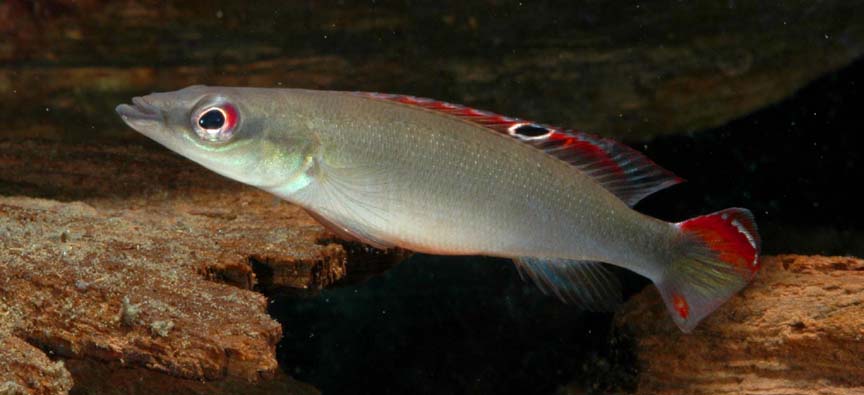
This fish was the find of the trip. It is an undescribed dwarf pike cichlid. It is a leaf litter resident, but can also be caught at night in the main river channel, when they come to the shore to get away from catfish and nocturnal predators. On our trip, there was not much to eat besides the bass that Bob was catching and grapefruit from a nearby tree. After peeling the citrus fruit, some of us threw the peel into the river. That night, we were night collecting and came across many citrus peels and under each peel, there was a lovely little pike! We began calling it the Citrus Pike and the name stuck.
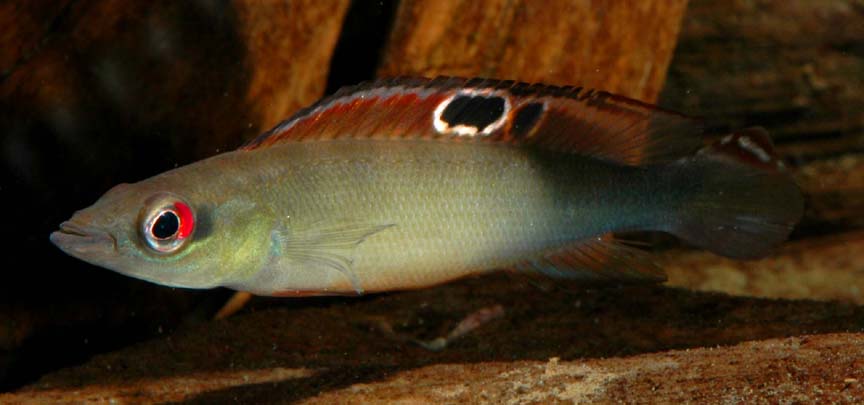
As with many Crenicichla species, this species is fairly variable. Some females have two or three dorsal fin spots while others have none. They adapt relatively well to aquarium conditions, are not too aggressive and learn to eat most aquarium fare. Since Rio San Martin is not a black water river - pH is about 6.5 and the water is soft, its water is relatively clear - they should be spawned relatively easily under the care of competent aquarists. Mind you, I said 'competent' not enthusiastic. I have been unable to spawn the damn things. All my Citrus Pikes died of old age after 3 or 4 years.
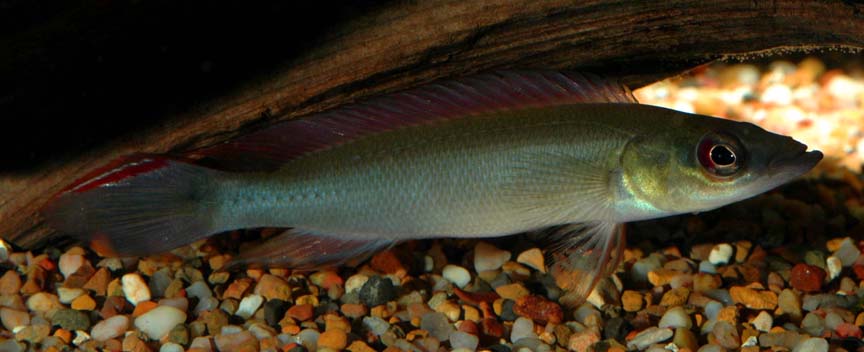
Males are not particularly attractive and get to about 4 inches. As far as I know, this fish is only found in this part of Bolivia.
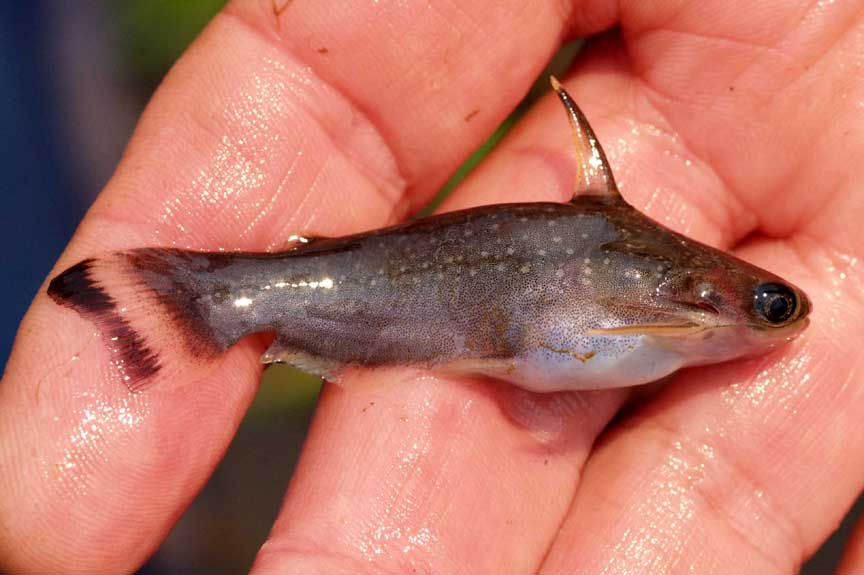
Auchenipterichthys sp. ??
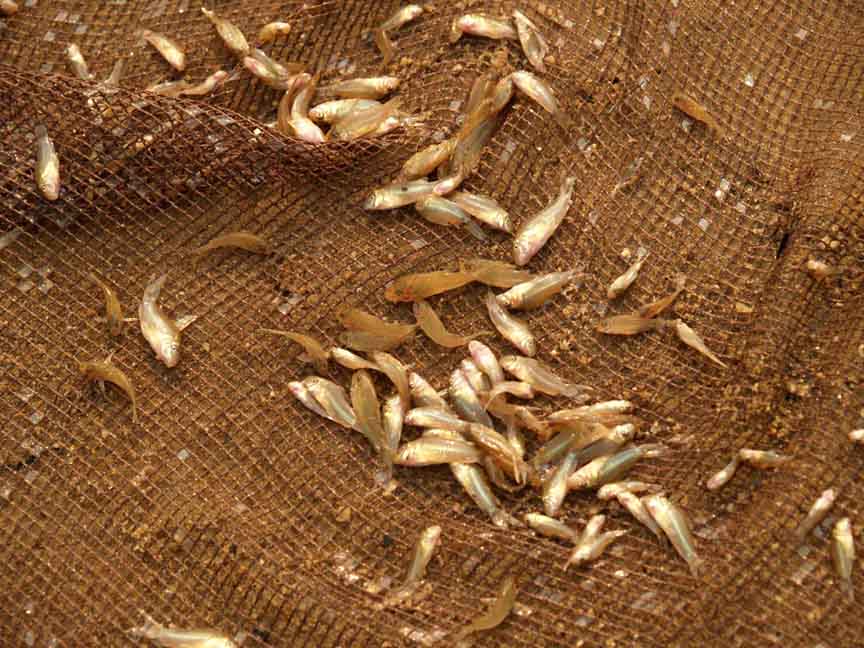
We seined thousands of these lovely little Corydoras sp. I believe they are Corydoras albolineatus.
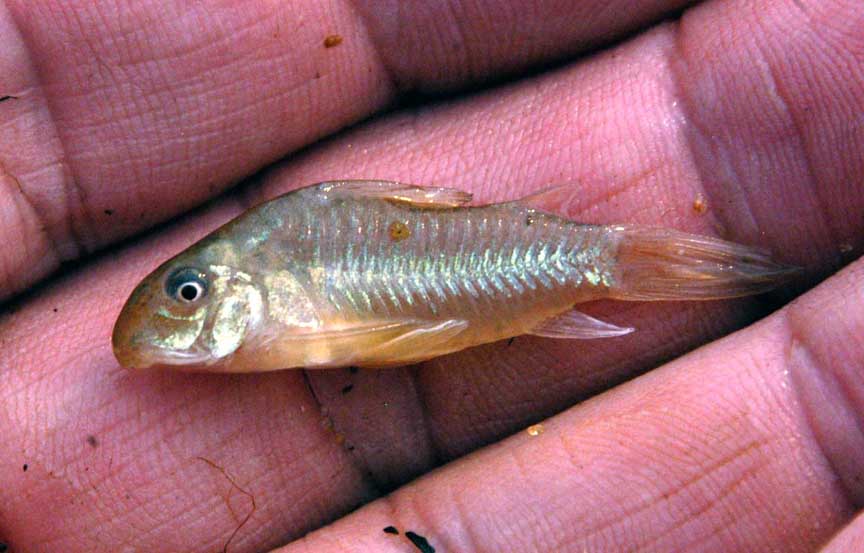
A closer shot of the same Cory.
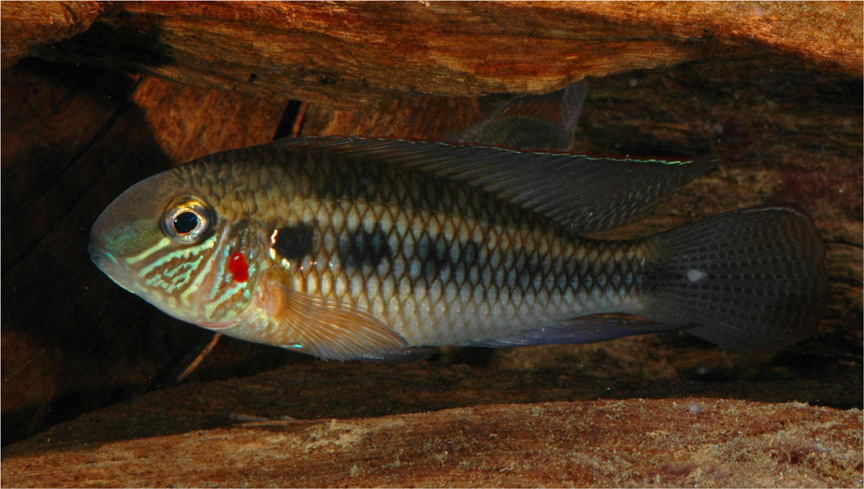
Crenicara latruncularium is a rarely imported species, if ever. They are docile and easily maintained - much like other Crenicara or Laetacara species. This species is found where Bolivia, Peru and Brasil come togher. We caught this fish with Apistos, Citrus pike and Laetacara species. Like the Citrus pike, I was unable to spawn these guys.
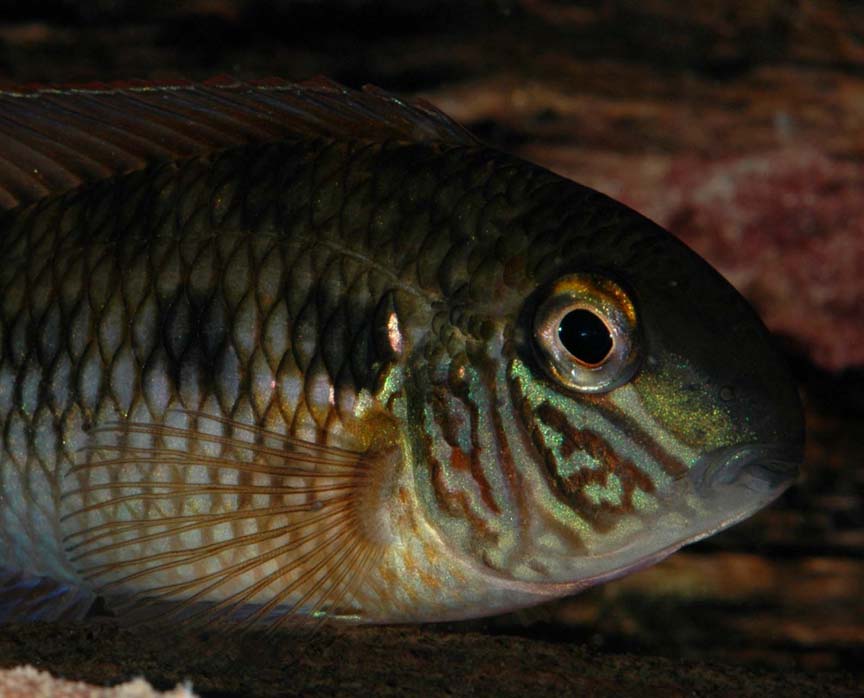
Some males had a bright red spot on their cheek while other did not possess the beauty spot.
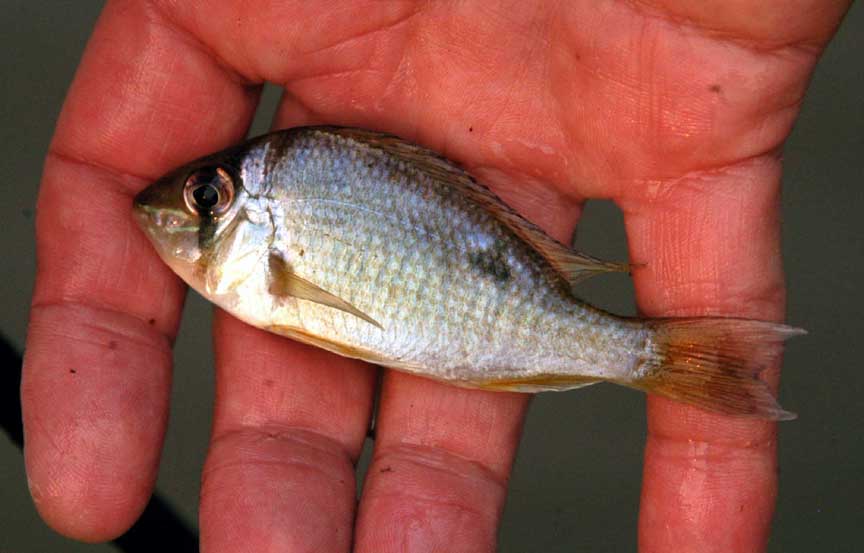
Biotodoma cupido, at its southernmost distribution border. Neither rare nor abundant in Rio San Martin, it is touchy and sensitive to hold, transport and acclimate.
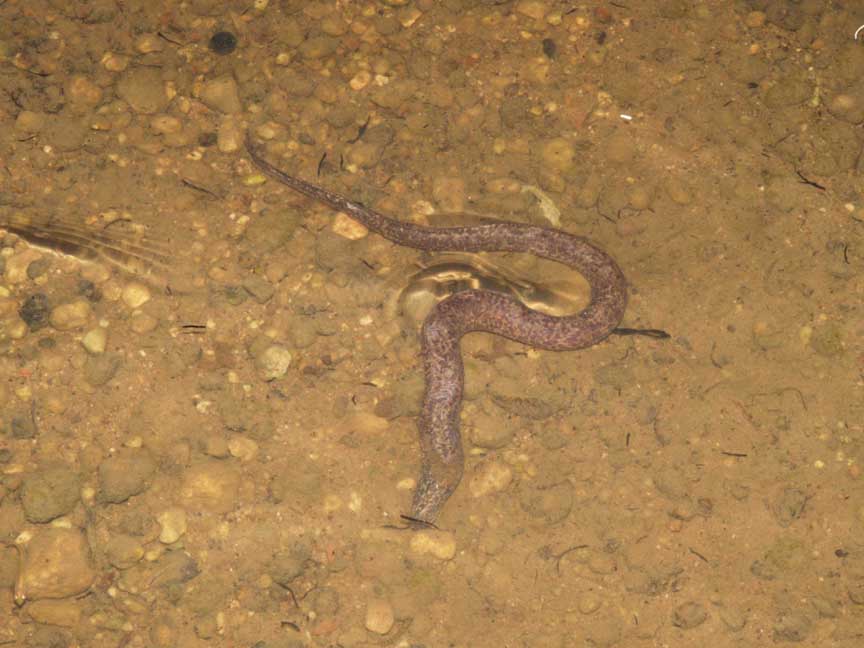
This Eel was almost 2 feet long. I think it is Symbranchus marmoratus.
All photos by J. Cardwell, S. Jack and V. Kutty
|

